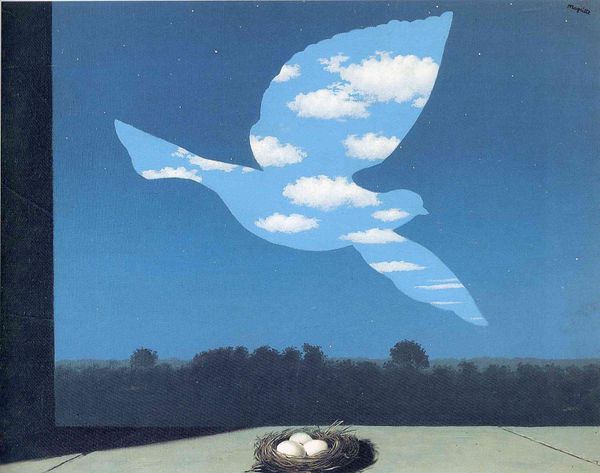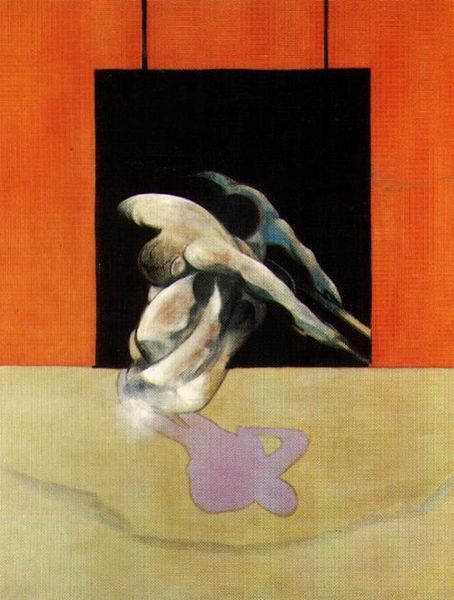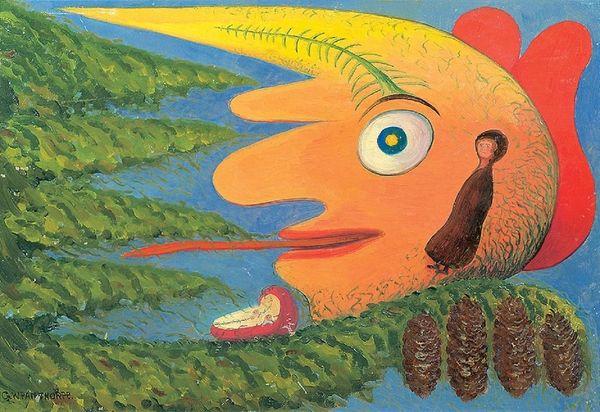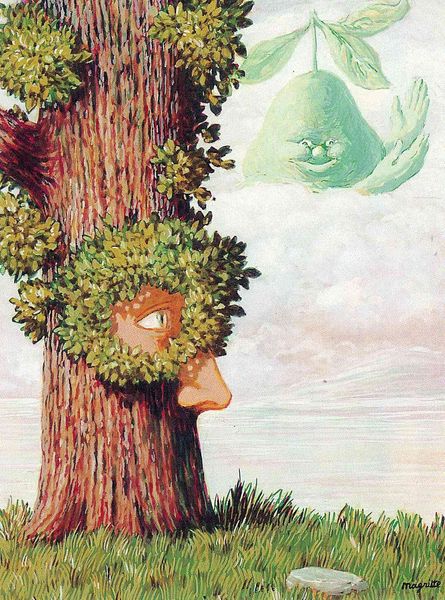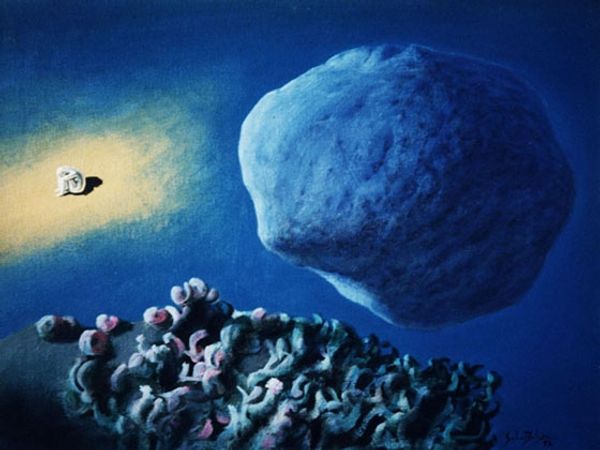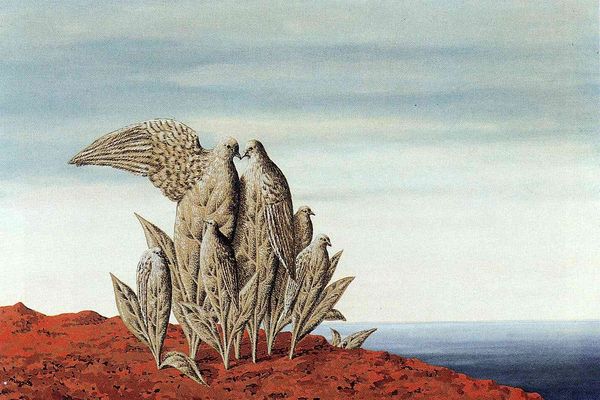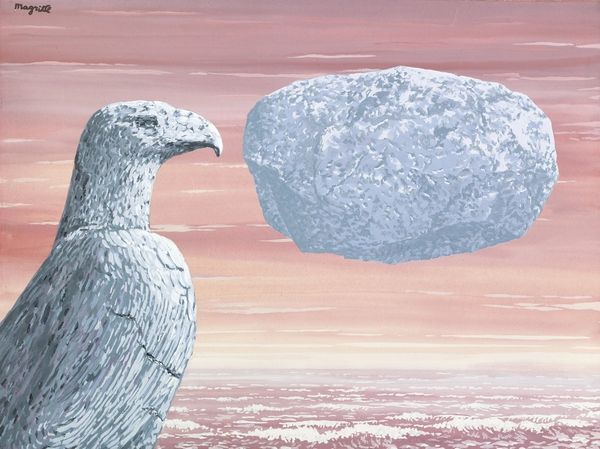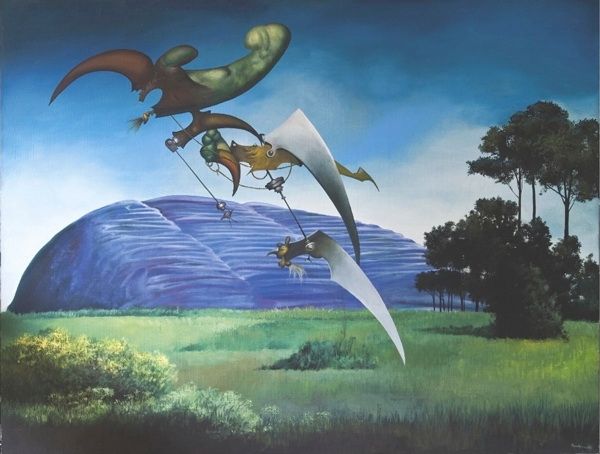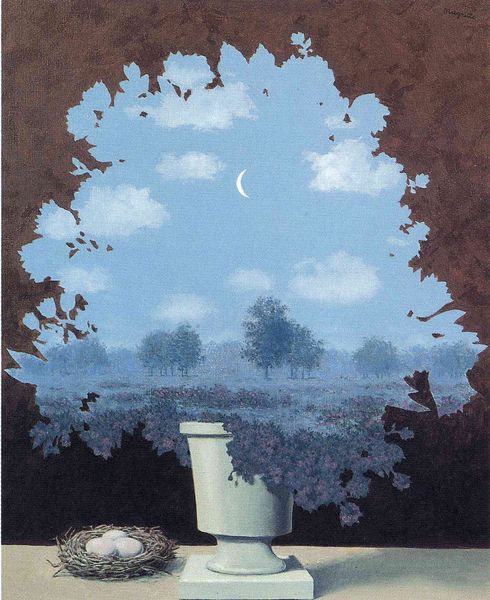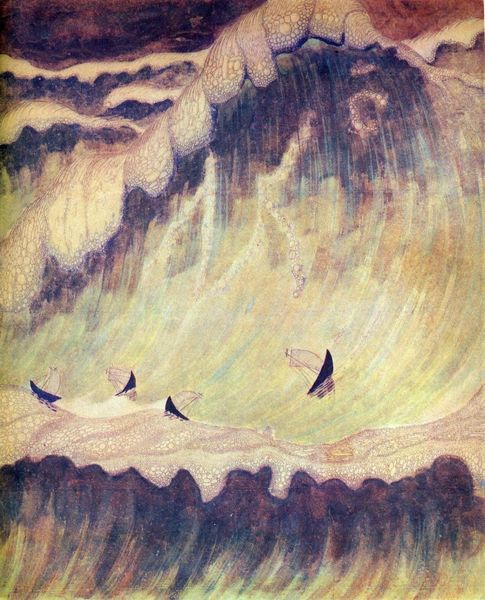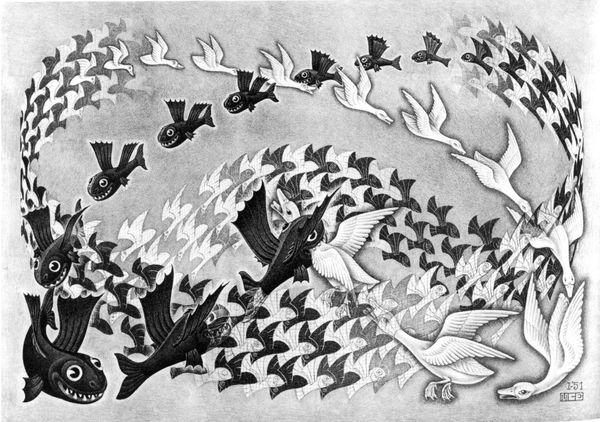
painting, oil-paint
painting
oil-paint
landscape
figuration
oil painting
surrealism
Copyright: Rene Magritte,Fair Use
Curator: Standing before us is René Magritte's oil on canvas, "Spring," painted in 1965. Editor: It strikes me immediately as a strangely peaceful yet unsettling scene. That large, bird-shaped void filled with treetops against the serene sky creates such an arresting image. Curator: Indeed. Magritte was known for his precise technique, and this painting showcases his meticulous application of paint. You can see the layering to achieve the density of the foliage and the contrasting textures of the stone wall. This technique draws on conventions within oil painting traditions, using specific types of labor and rendering, to achieve such uncanny, dream-like results. Editor: I read this work as a commentary on the very nature of freedom, where it is defined, perhaps even contained, by what it seemingly transcends. This resonates deeply with political narratives surrounding freedom, such as liberation struggles often revealing new systems of control and constraint in postcolonial societies. What does it truly mean to be free if your freedom is defined by the very landscape you attempt to escape? Curator: An interesting perspective! Considering Magritte’s broader body of work and his affiliation with the Surrealist movement, it is tempting to view the motif of birds and landscape not simply as symbols but more directly tied to commodity objects and commercial strategies for paintings on the market at this time. He engaged popular art practices in terms of the distribution and sale of artworks to consider new publics for paintings. Editor: But there's an interplay, too. The composition frames a dialogue between a restrictive societal structure and personal dreams, desires and emancipation: notice the solidity of the brick foundation where the bird’s nest rests, contrasted by a vast yet ethereal background filled with lush shrubbery and an open, limitless, yet confining blue sky. The empty nest hints at absence. Are the figures aware of being surveilled or seen within these environmental conditions? Curator: I’m interested in the implications that he utilizes familiar imagery that might normally be associated with landscapes to create alienation. I’m intrigued by how such ordinary objects are produced and received in everyday life, and then given such prominence and consideration through paintings that explore perception and consciousness. Editor: Ultimately, Magritte leaves us to confront our preconceptions. His landscapes invite us to see both their constraints and potential in everyday forms. Curator: Absolutely. Looking at "Spring," we realize that what seems solid and grounded may be only a layer of pigment expertly placed to shift our perception of labor, nature and representation itself.
Comments
No comments
Be the first to comment and join the conversation on the ultimate creative platform.

